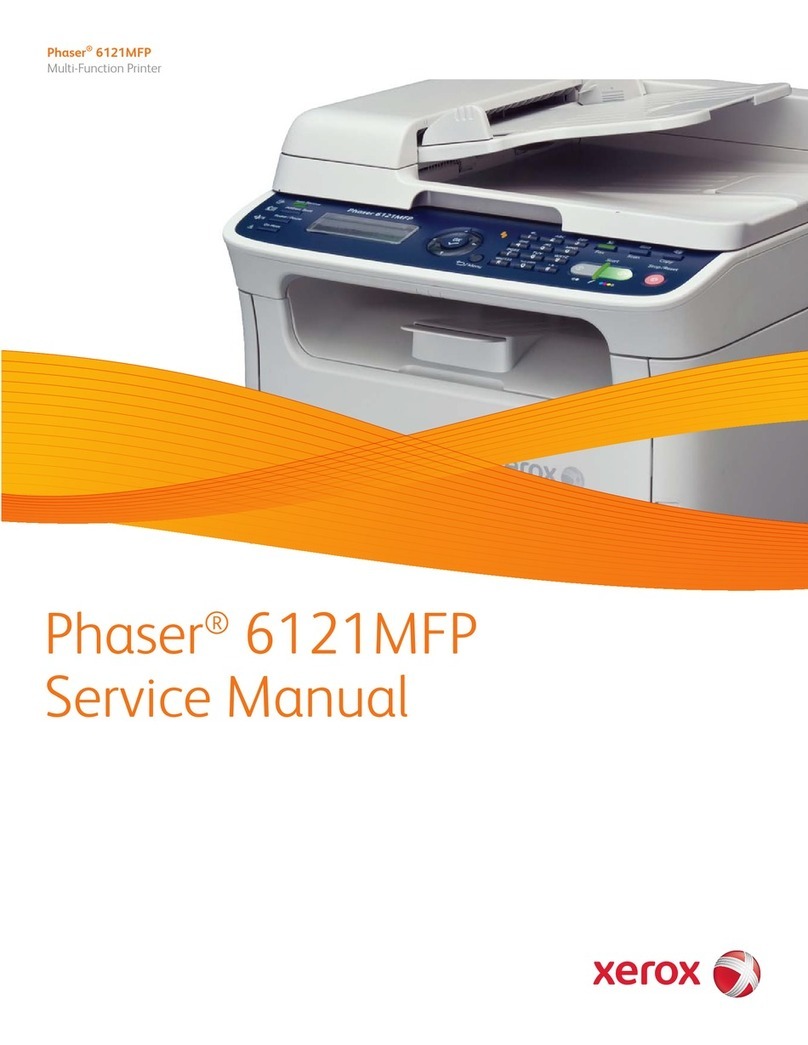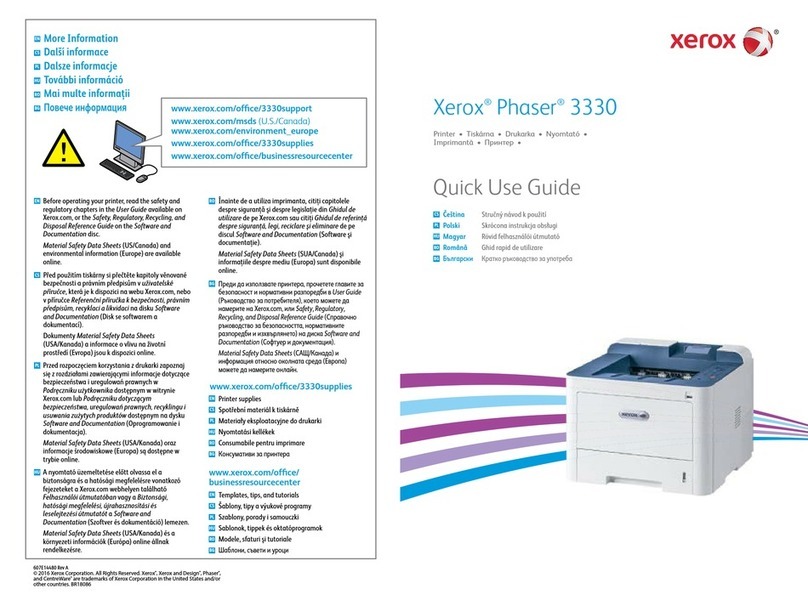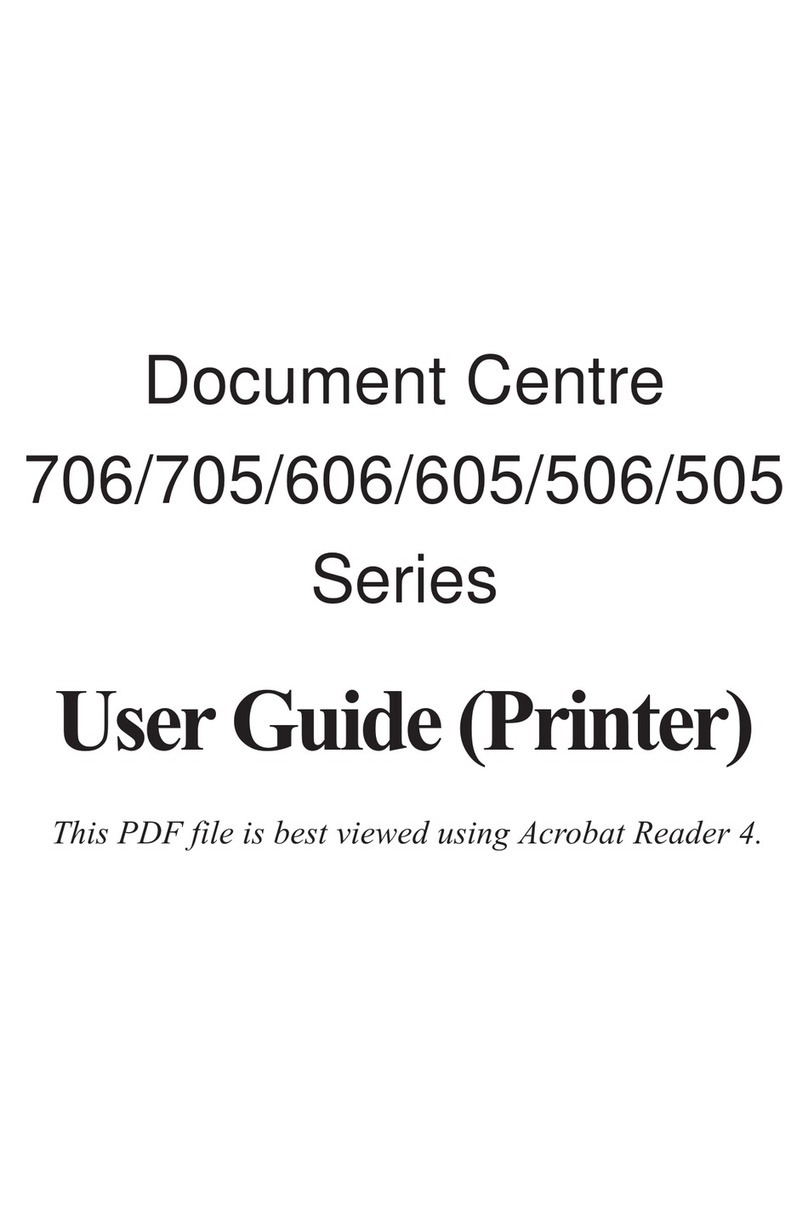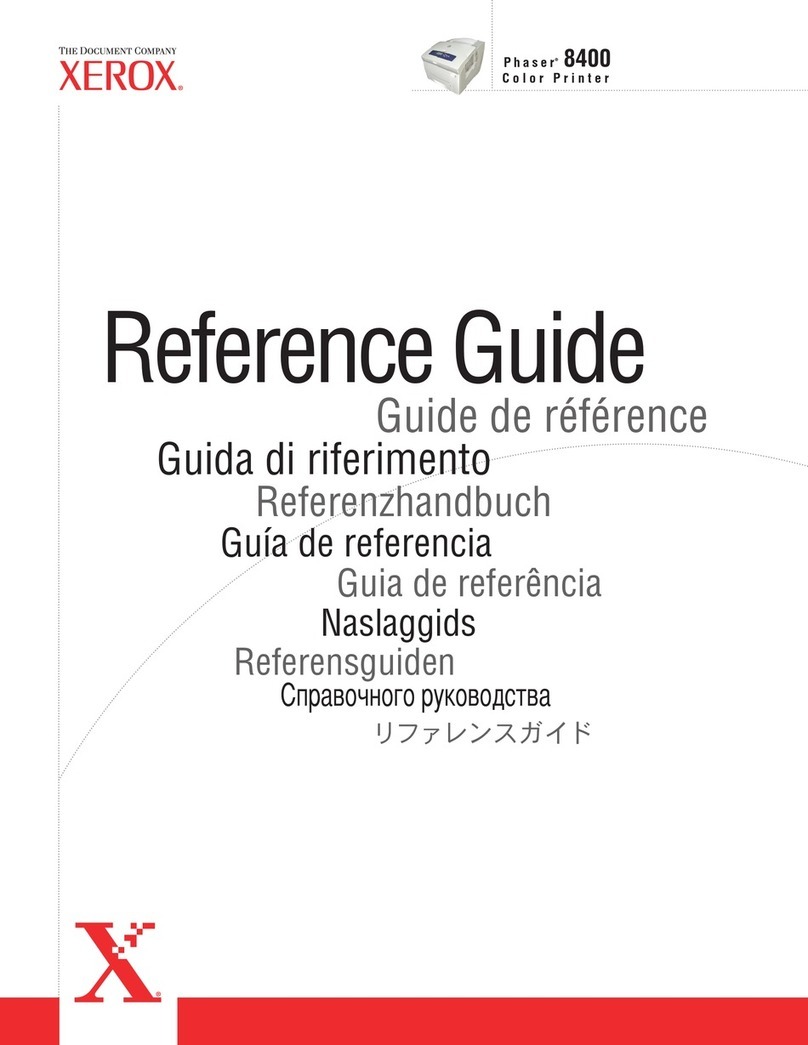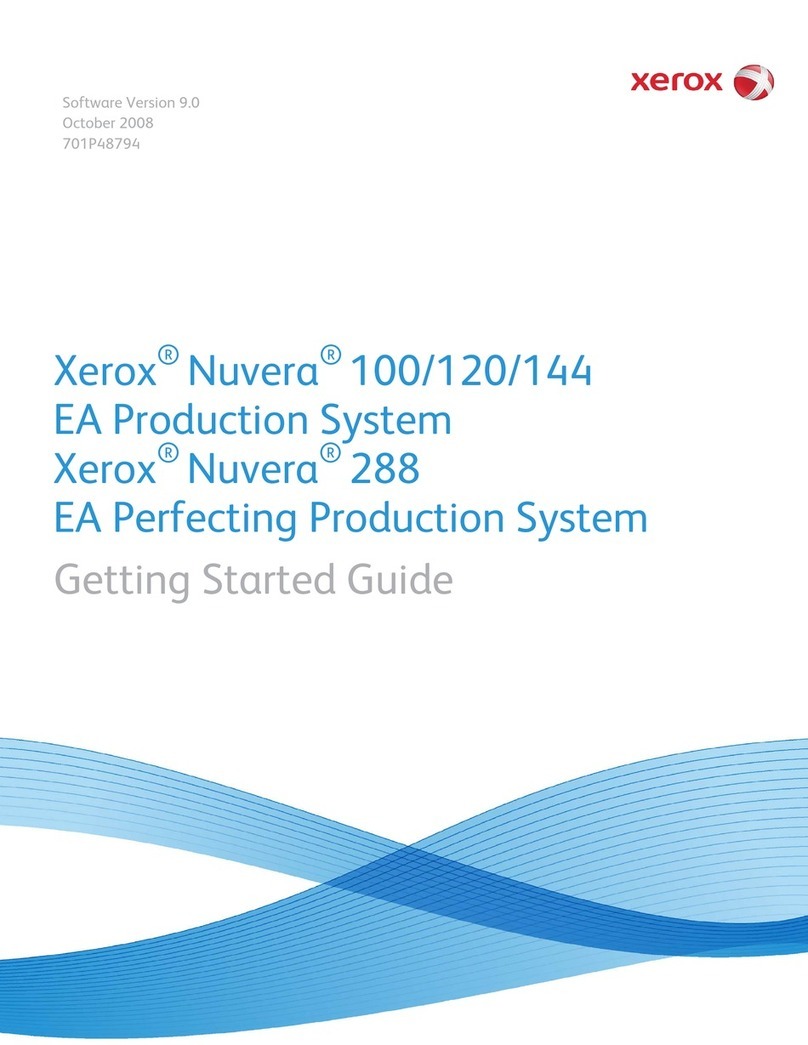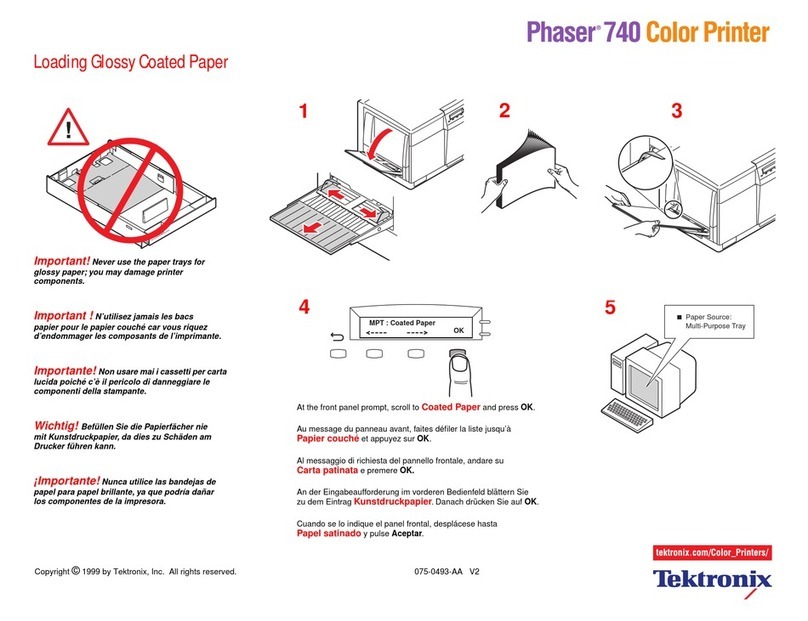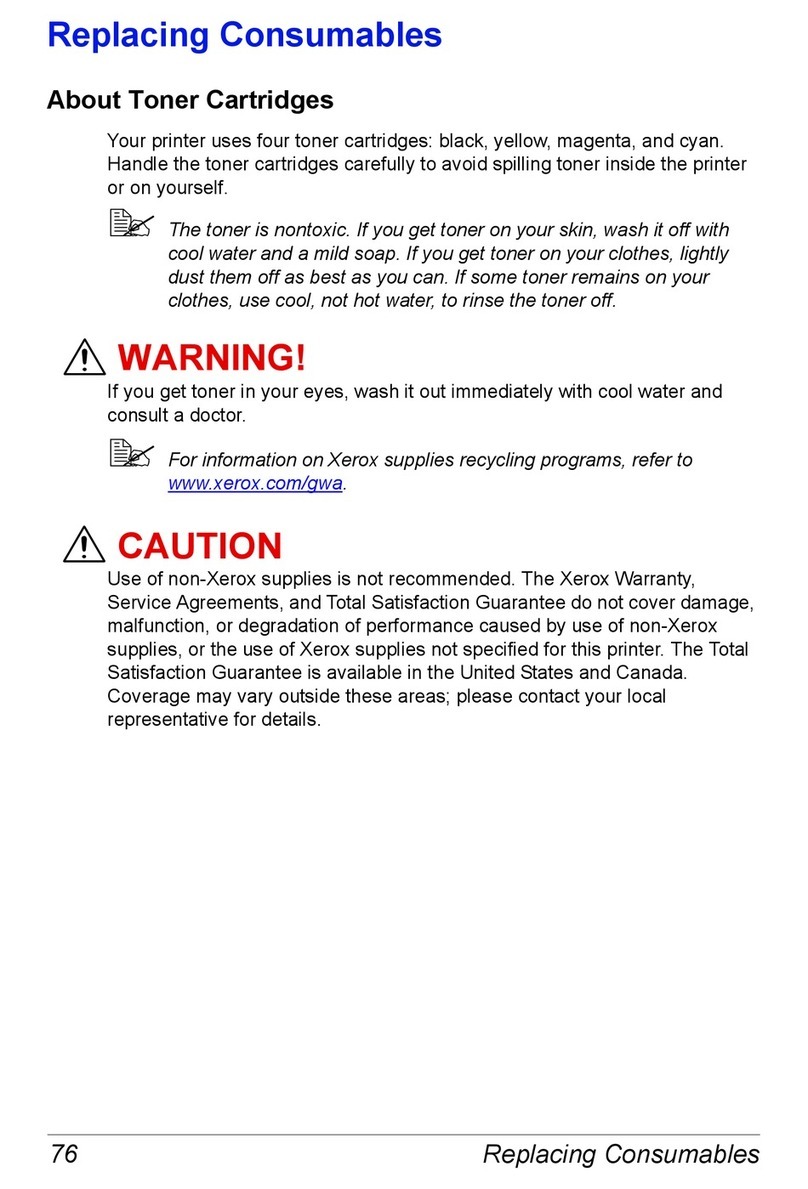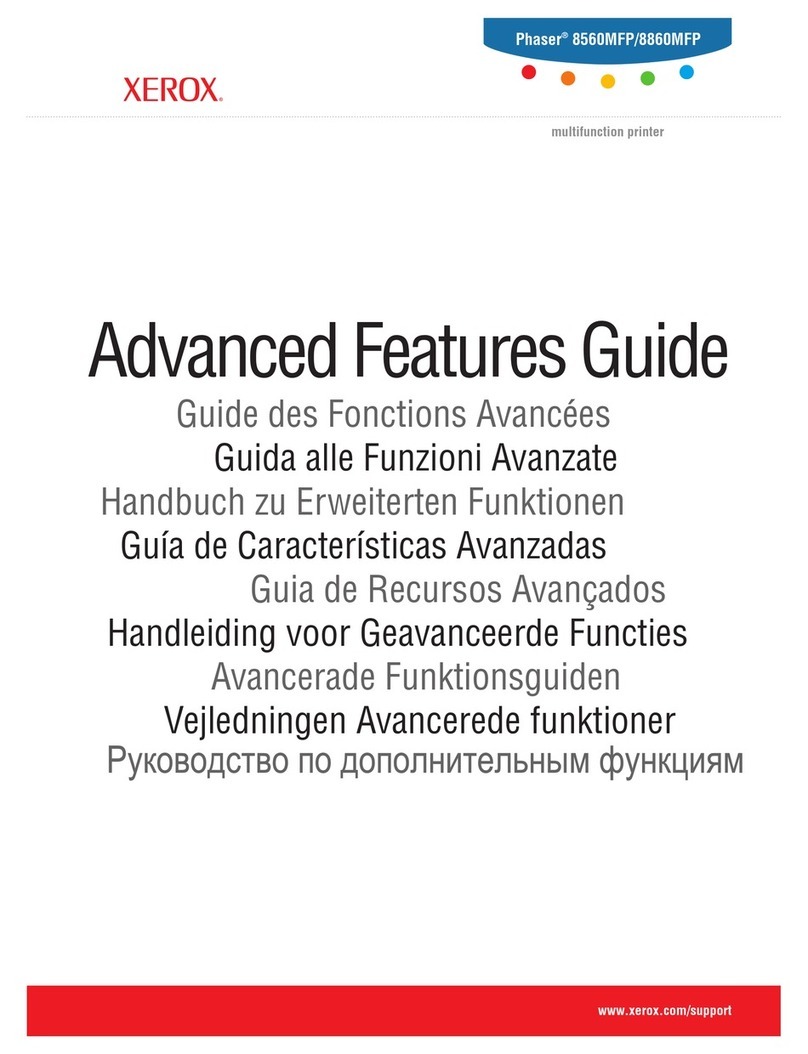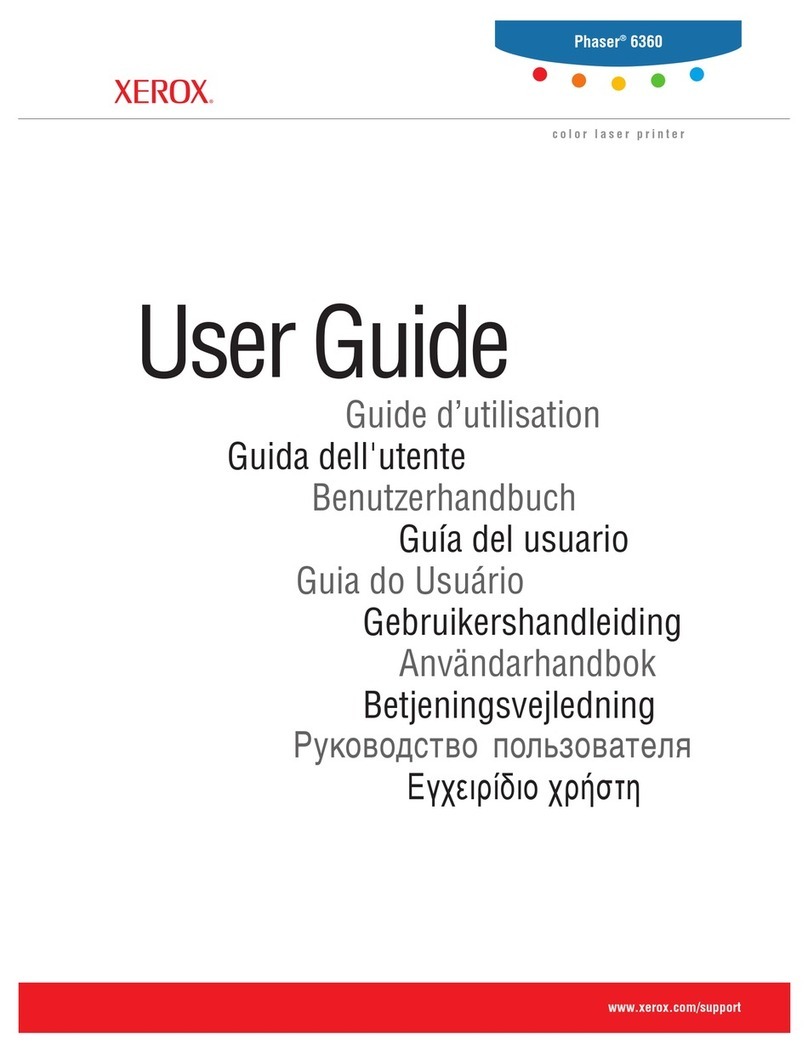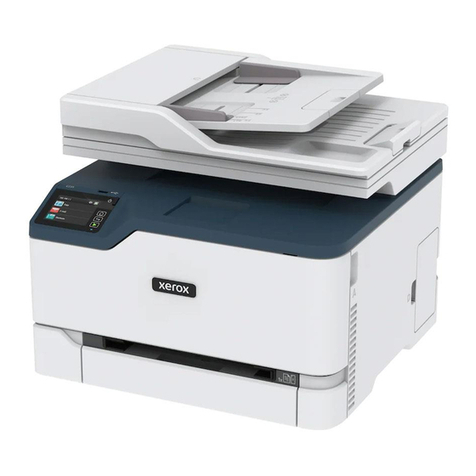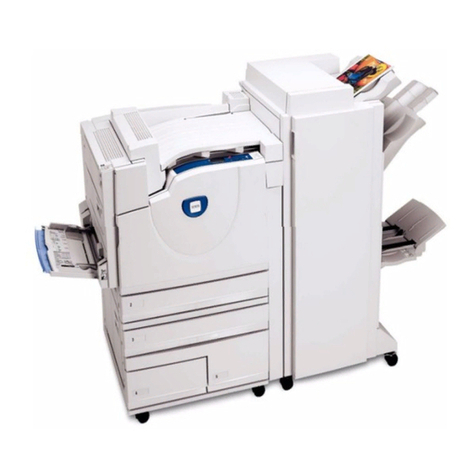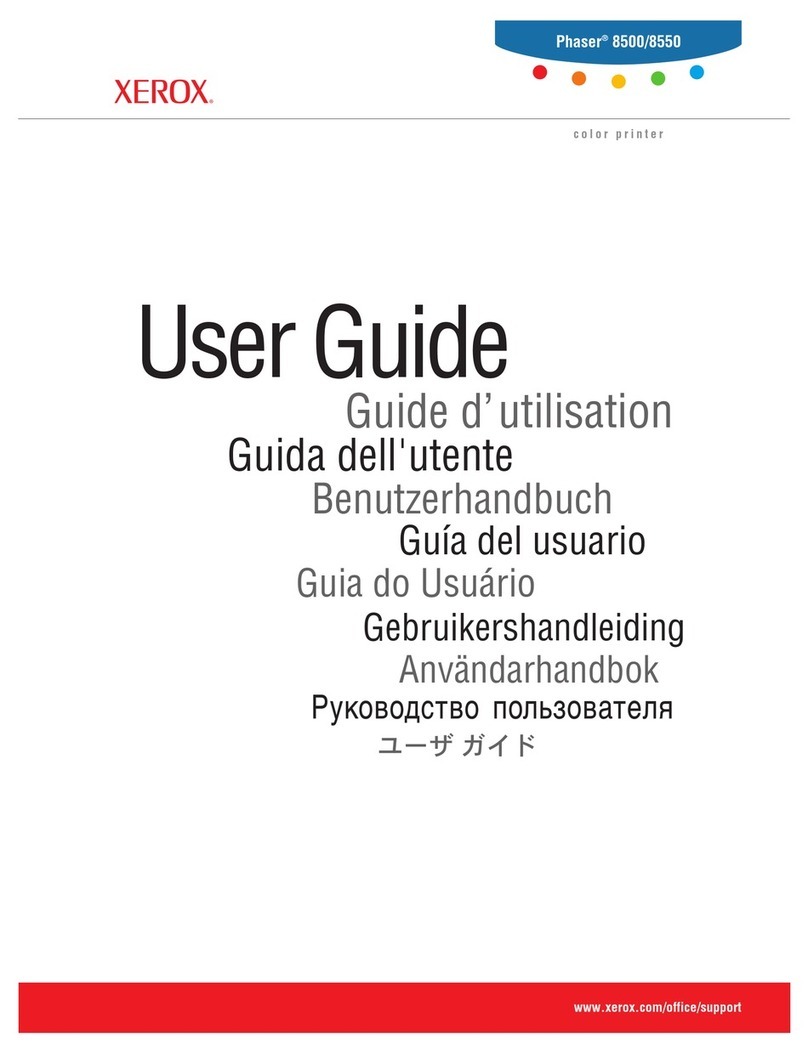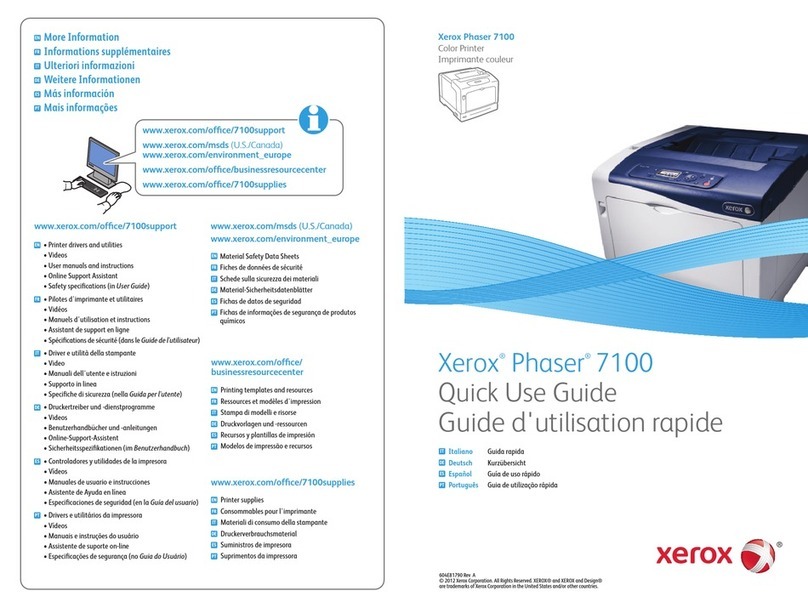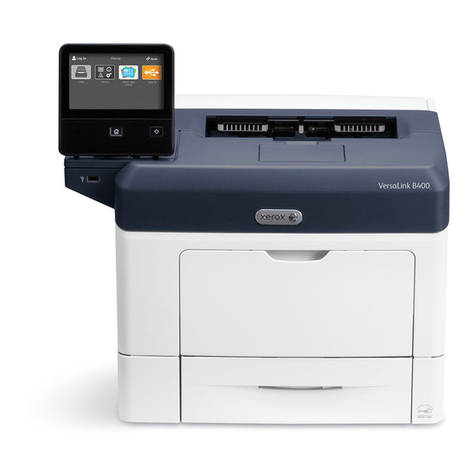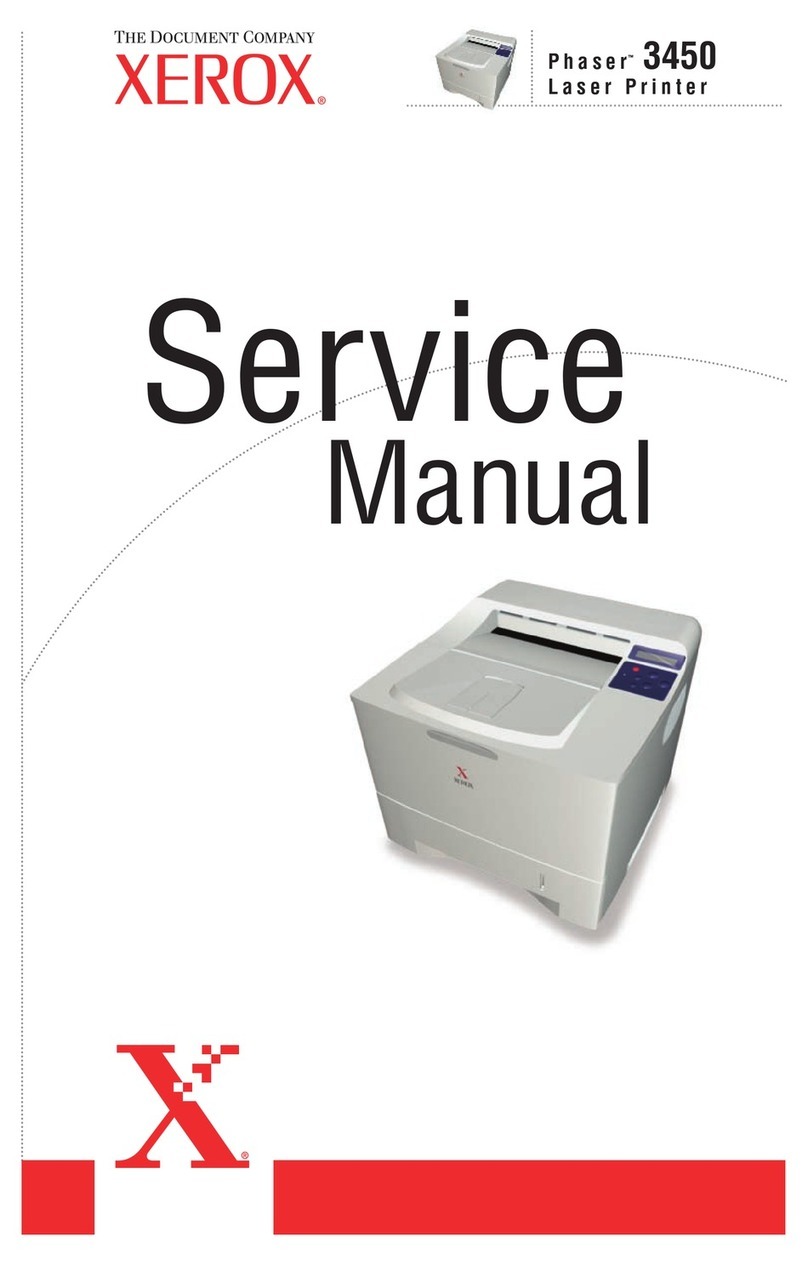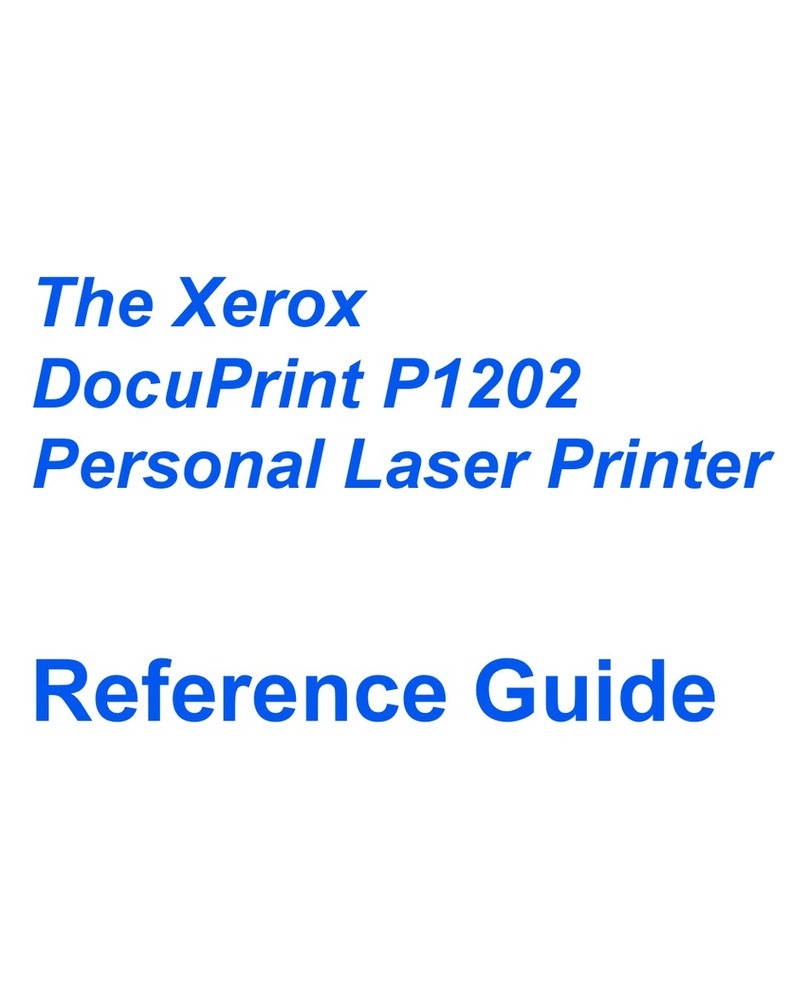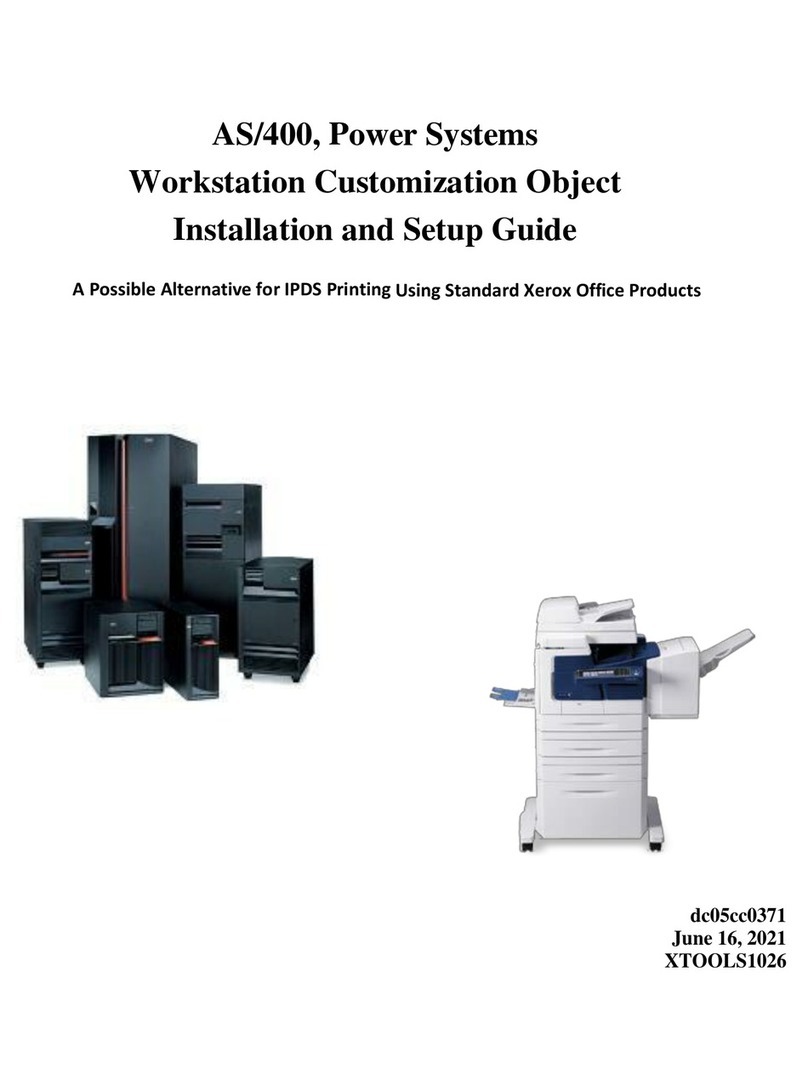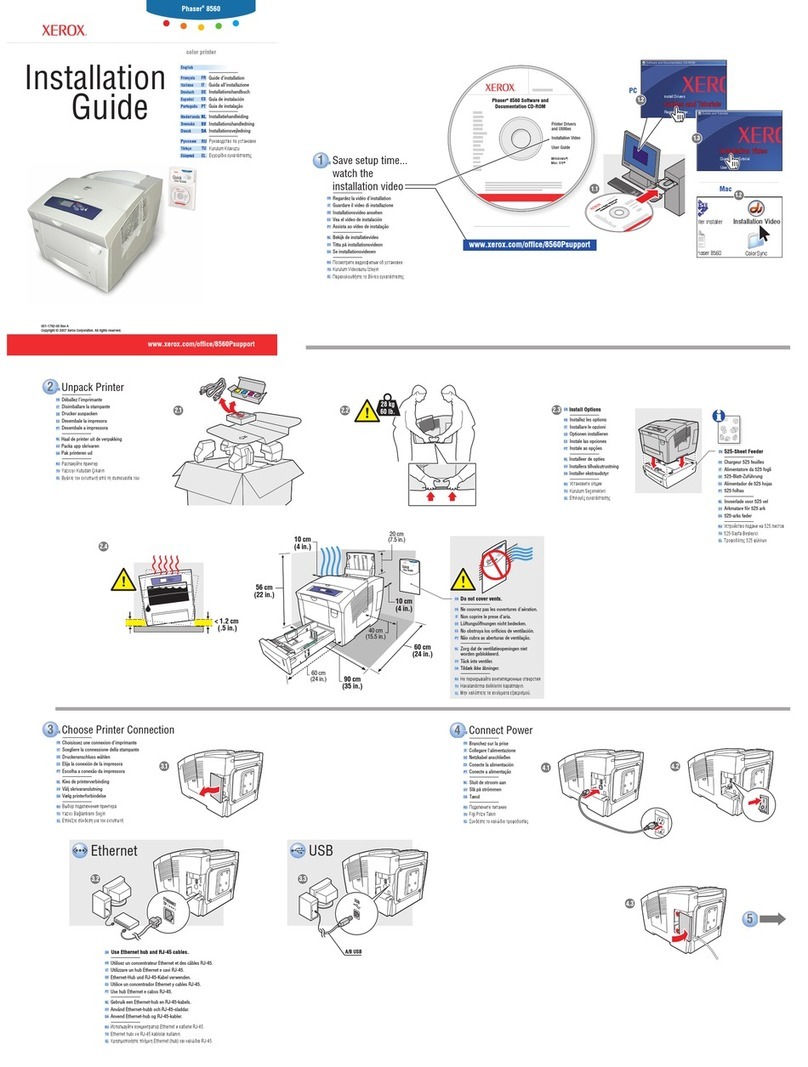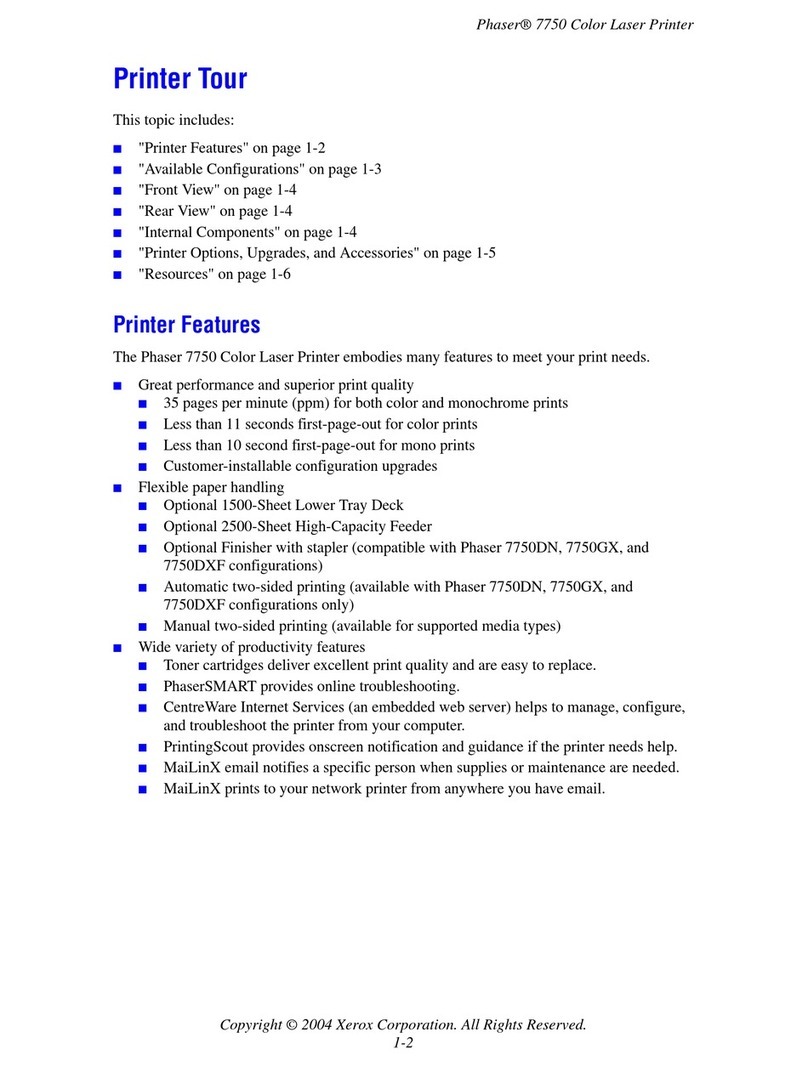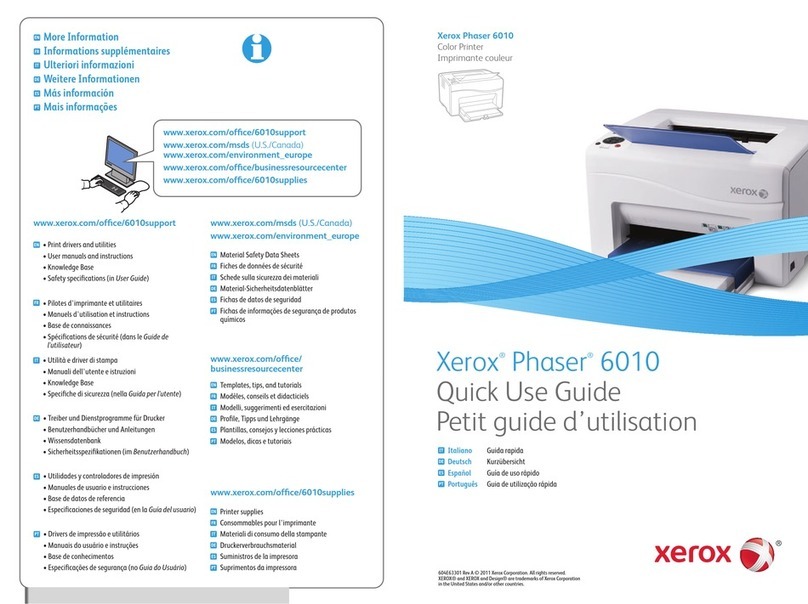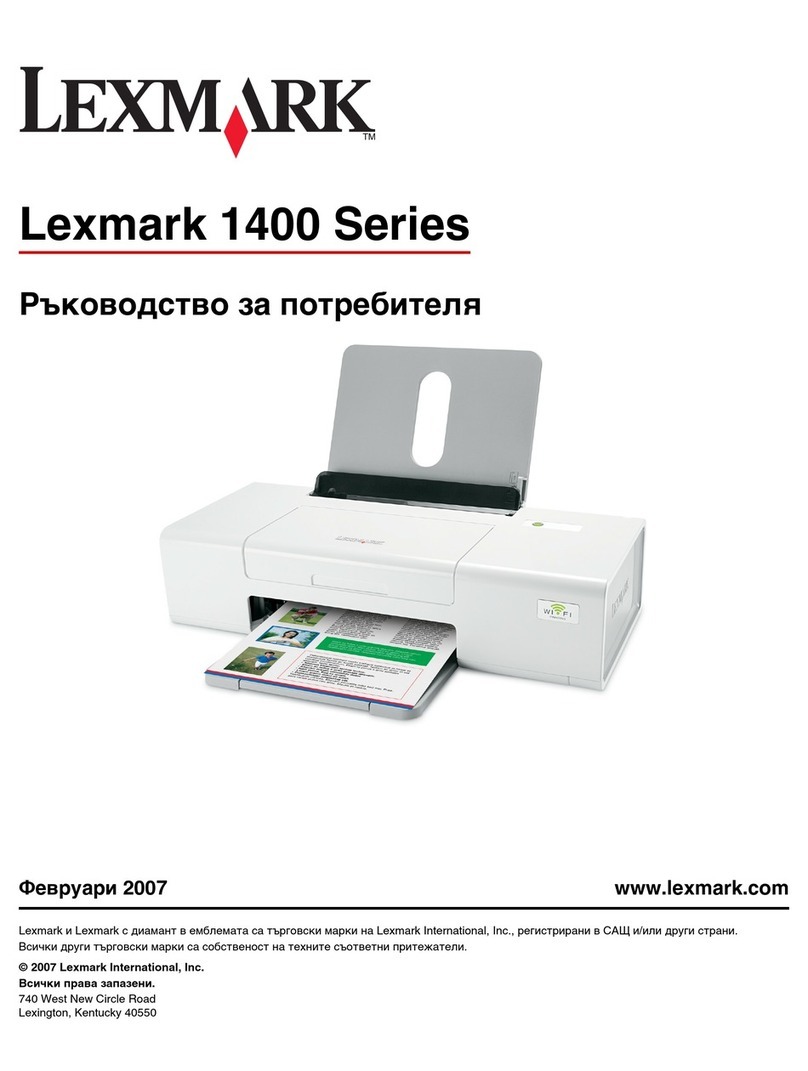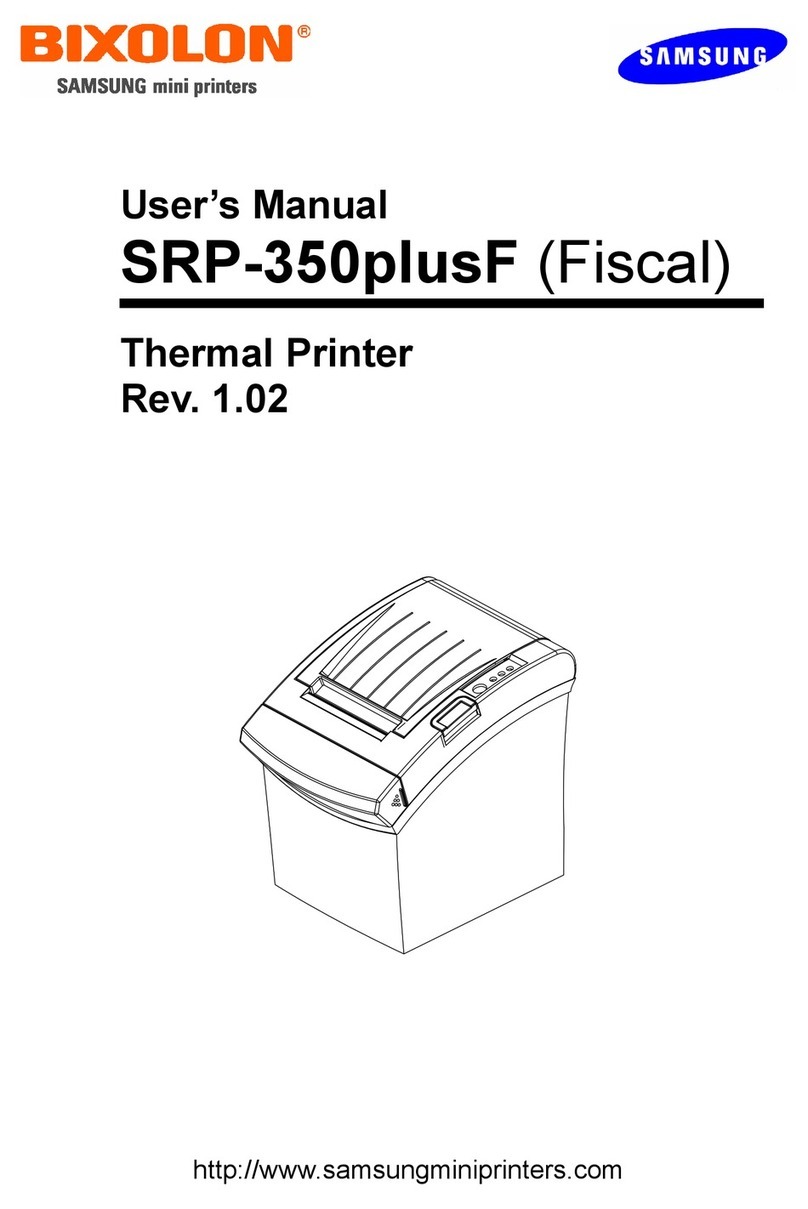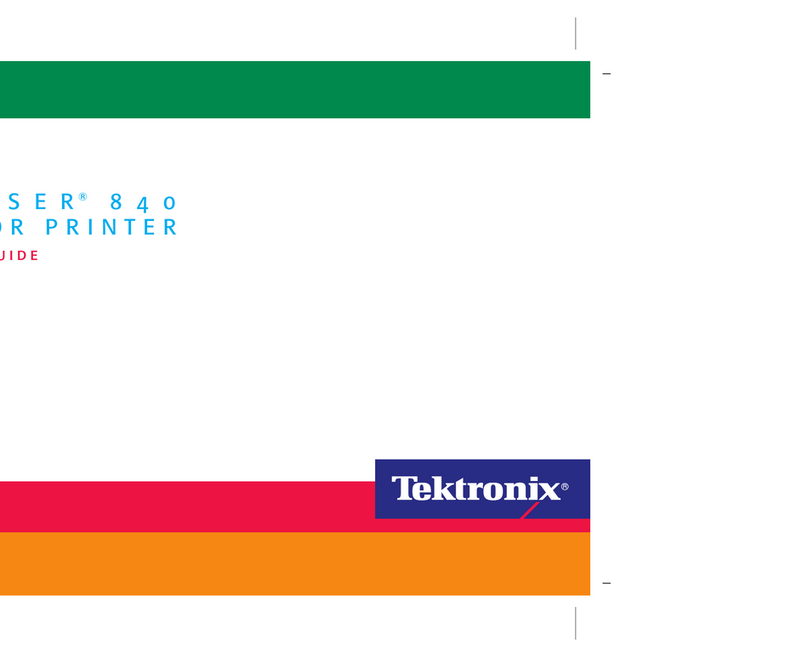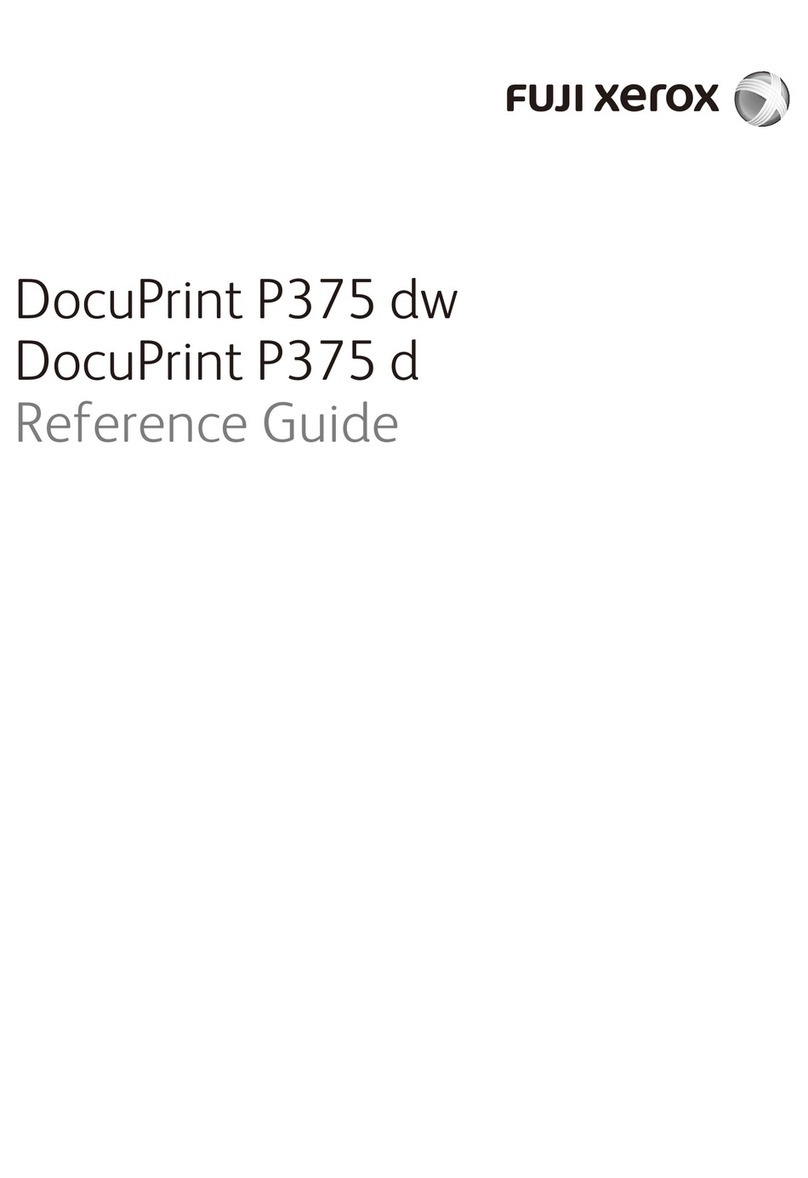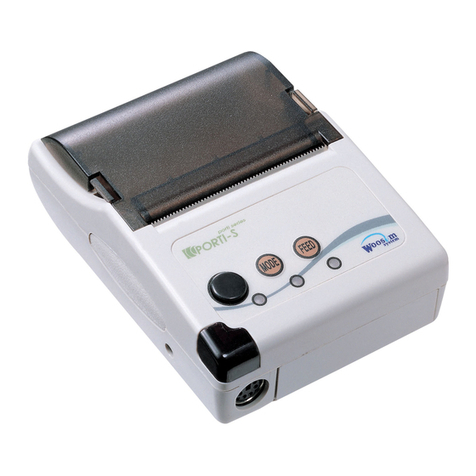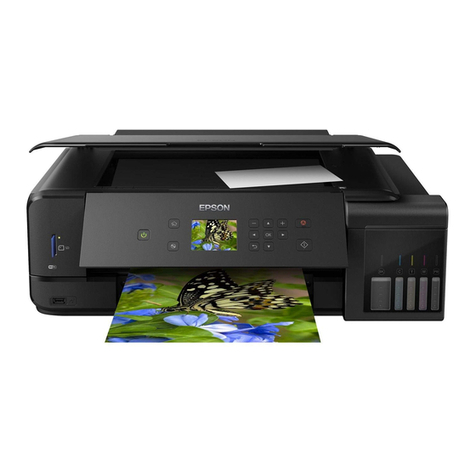
www.xerox.com/Section508 10 of 11
Last Revision: 09/04/07
Section 1194.41 Information, Documentation and Support - Detail
(Xerox Addition to VPAT) Back to top
Criteria Supporting Features Remarks and explanations
(a) Product support
documentation provided
to end-users shall be
made available in
alternate formats.
Supports Product support documentation is available in
alternate format.
(b) End-users shall have
access to a description of
the accessibility and
compatibility features of
products in alternate
formats or alternate
methods upon request, at
no additional charge.
Supports Accessibility and compatibility information is
available on www.xerox.com/section508/.
(c) Support services for
products shall
accommodate the
communication needs of
end-users with disabilities.
Supports Xerox provides support services that accommodate
the communication needs of end-users with
disabilities.
What is the Voluntary Product Accessibility Template (VPAT)?
The purpose of the Voluntary Product Accessibility Template is to assist Federal contracting officials in making
preliminary assessments regarding the availability of commercial Electronic and Information Technology products
and services with features that support accessibility. It is assumed that offerers will provide additional contact
information to facilitate more detailed inquiries.
The first table of the Template provides a summary view of the section 508 Standards. The subsequent tables
provide more detailed views of each subsection. There are three columns in each table. Column one of the
Summary Table describes the subsections of subparts B and C of the Standards. The second column describes
the supporting features of the product or refers you to the corresponding detailed table, "e.g., equivalent
facilitation." The third column contains any additional remarks and explanations regarding the product. In the
subsequent tables, the first column contains the lettered paragraphs of the subsections. The second column
describes the supporting features of the product with regard to that paragraph. The third column contains any
additional remarks and explanations regarding the product.
User Tasks Assessed
For the Phaser 8860, general user tasks were assumed to be programming and running jobs, and unloading
prints. According to the Federal Access Board, tasks such as clearing jams, loading supplies, and adding paper
are considered maintenance tasks and are not included in this summary.
Xerox Product Accessories for People with Disabilities
In addition to the award-winning Xerox Copier Assistant, Xerox provides additional accessories for people with
disabilities; for example:
•Braille enablement – Pressure sensitive labels allow Braille to be added to almost any copier control
console.
•Angled console – This kit, which is currently available for a number of models, inclines the copier console,
allowing wheelchair users to view and reach the controls.
•Footswitch – An electrically operated switch models, which is available on many models, can be used to
actuate the "Start Print" button.
